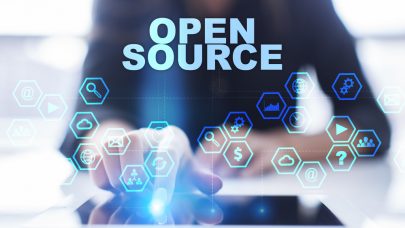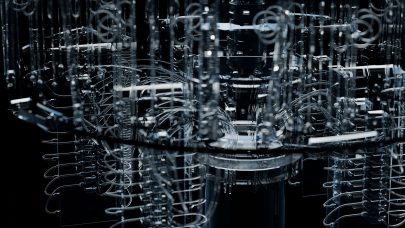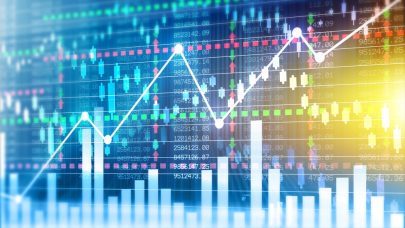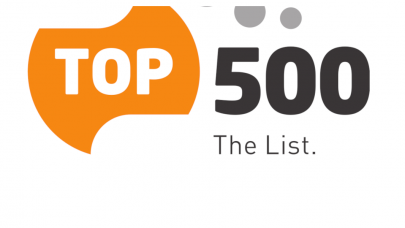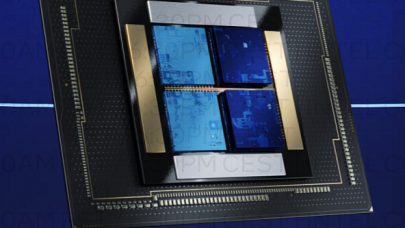Details about two previously rumored Chinese exascale systems came to light during last week’s SC21 proceedings. Asked about these systems during the Top500 media briefing on Monday, Nov. 15, list author and co-founder Jack Dongarra indicated he was aware of some very impressive results, but withheld comment when asked directly if he had seen the new Sunway “OceanLight” system.
An invited guest at the SC21 Top500 BOF – David Kahaner, HPC expert and founder of the Asian Technology Information Program (ATIP) – gave a far more extensive account during the BoF on Tuesday night.
“Full disclosure, I haven’t been to China this year because of COVID. But we have a couple of people working with us. So I think the information that I have is accurate,” Kahaner offered as an opening.
Kahaner claimed there are two exascale (> 1 exaflops High Performance Linpack) systems running in China today, and reported there is a third, delayed, system.
Multiple sources have affirmed to HPCwire the core details presented by Kahaner, including the location of the systems and their reported Linpack scores, and there are multiple peer-reviewed papers corroborating much of the information, particularly in regards to the new exascale Sunway system.
OceanLight
The new Sunway machine, called OceanLight, is the successor to TaihuLight. While Sunway TaihuLight is located in Wuxi, China (close to its namesake Lake Taihu), OceanLight is sited in the port city of Qingdao, of strategic significance to China, opening onto China’s near-seas region. (HPCwire first reported on this system in 2017.)
The Qingdao supercomputing site is a new mission-oriented laboratory, according to ATIP research, focused on marine science and related activities. “This particular machine is probably not going to get a lot of access from outside China, because the lab that it’s in is focused in a very specific, mission-oriented way,” said Kahaner.
OceanLight was reportedly completed in March 2021, delivering a purported 1.05 exaflops Linpack out of 1.3 exaflops theoretical peak. “That is not official, but that’s what we’ve been told by several people,” said Kahaner.
While the new Sunway machine did not make it onto the most recent Top500 list, unveiled last week, three of the six research teams nominated for the 2021 Gordon Bell Prize, leveraged the system, including the winning paper: Closing the “Quantum Supremacy” Gap: Achieving Real-Time Simulation of a Random Quantum Circuit Using a New Sunway Supercomputer. According to the paper’s authors, OceanLight achieved a sustained performance of 1.2 exaflops of single-precision computing power, or 4.4 exaflops of mixed-precision, on a quantum circuit simulation, setting “a new milestone for classical simulation of quantum circuits.”
OceanLight employs the new-generation, domestically designed and manufactured Sunway architecture, based on upgraded SW26010Pro CPUs. The peak performance of the SW26010Pro processor is 14.026 teraflops in double precision and 55.296 teraflops in half precision, according to another Gordon Bell Prize nominated research group (authors of Extreme-Scale Ab initio Quantum Raman Spectra Simulations on the Leadership HPC System in China). The team reported a performance of up to 468.5 petaflops in double-precision and 813.7 petaflops in mixed-half precision on the new Sunway for the entire spectroscopy application, including I/O.

The largest run of the Gordon Bell Prize-winning research on quantum circuits was deployed across 107,520 SW26010Pro CPUs, which when multiplied by 14.026 double-precision teraflops per CPU, comes out to 1.51 peak double-precision exaflops. While not an exact match for the system peak relayed by Kahaner’s team, it is possible a different system configuration was used for Linpack testing (as is often the case).
Tianhe-3
The second Chinese exaflops system covered in Kahaner’s talk – Tianhe-3 – is in the city of Tianjin, east of Beijing. This is the same site of the Tianhe-1A system, which in 2010 became the first machine in China to achieve a number-one ranking on the Top500. Tianhe-3 is based on a Phytium 2000+ FTP Arm chip plus a Matrix 2000+ MTP accelerator. The system was completed at the end of last month, according to ATIP research. It offers an estimated 1.7 exaflops peak performance and just over 1.3 exaflops on Linpack. “We were just told the day before yesterday that the first Linpack run gave them these numbers, 1.3 exaflops (HPL). This particular facility might be more open to people outside China. I hope it is,” said Kahaner.
The Sugon system
Kahaner reported that the third exascale system under development is more complicated. The National Supercomputing Center in Shenzhen had selected Chinese company Sugon (also known as Dawning) to develop and implement the two-exaflops system for installation in 2022, but the project has been delayed.
The intended processor was supposed to be a new version of Sugon’s Hygon CPU, said Kahaner, but due to restrictions imposed by the U.S. government, it is no longer clear what computing platform will be used. Hygon Dhyana was a China-made AMD x86 CPU, licensed through AMD’s joint venture with THATIC, a Chinese holding company that was added to the U.S. Entity List in 2019 (see related coverage). At ISC21, it was reported (by Depei Qian of Beihang University) that the Sugon exascale system in Shenzhen would use a new version of the Hygon CPU connected to a Hygon DCU accelerator (“like a GPU”), cooled using Sugon’s custom liquid immersion technology.
“The key point of this slide,” said Kahaner, “is to say that there are actually two exaflops systems in China, period, full stop.”
To support its growing HPC program, China has expanded its network of National Supercomputer Centers (NSCCs). There are eight NSCCs in production and two in development, “likely located in Dalian and Xi’an.”
In addition to the exascale systems, there are a number of large multi-hundred petaflops systems that are either already in production or are coming online very soon, said Kahaner. According to multiple trusted sources that HPCwire spoke with, two such systems were provisionally submitted to the Top500 in 2019, benchmarked at ~260-petaflops and ~315-petaflops Linpack, but they were withdrawn from the list before it was published.
None of these systems – neither exascale nor so-called pre-exascale – have made it onto the Top500 list. And while China has its own version of the Top500, called the Top100 (released Nov. 12, the Friday before SC21), none were to be found on that list either. The number one system on China’s Top100 list is a cloud system benchmarked at 125 Linpack petaflops. Number two is the Sunway TaihuLight (currently number four on the Top500) with 93 Linpack petaflops. Number three is from an unspecified networking organization, delivering 87 Linpack petaflops. Number four is Tianhe-2A, offering 61 Linpack petaflops (and appearing at number seven on the Top500). And number five, delivering 56 Linpack petaflops, is hosted by another unspecified networking company.
By ATIP’s reasoning, a more transparent accounting would look like this:
“You might ask: why in the world are those big machines not on either the Chinese list or the U.S. list?” posed Kahaner. He declined to speculate himself, but invited the audience to think about why that could be.
I asked Dongarra about the significance and impact of withholding such a significant cohort of systems from the Top500 list.
“You would like to see all the machines, of course, be on the list so we could get an accurate count and track what’s going on from a historic perspective,” he said. “But in the end, the rules are such that they have to submit it; they have to be willing to submit it. So the usefulness of the list… if everybody decides they don’t want to submit to the list, the list will stagnate and die at that point. So I would say it’s a good thing to have those additional machines put onto the list. But again, there’s overriding concerns that they [China’s government] must be feeling that are not allowing them to reclaim that trophy at this point.”
Appendix
This description of the new Sunway system is excerpted from a 2021 Gordon Bell Prize nominated paper detailing the results of a large-scale simulation of a tokamak plasma. The researchers reported a sustained performance of 201.1 double-precision petaflops with the fastest iteration step achieving 298.2 double-precision petaflops.
 As the successor of Sunway TaihuLight, the new Sunway supercomputer consists of more than 103,600 SW26010Pro heterogeneous many-core processors. The architecture of SW26010Pro CPU is shown in Fig. 5. Each chip of the SW26010Pro processor contains 6 core groups (CGs). Each CG is the most basic unit that implements the manager-worker many-core architecture. In a CG, there is a management processing element (MPE) serving as the manager core and 64 computing processing elements (CPEs) arranged in an 8 x 8 grid acting as worker cores. As compared to its predecessor, SW26010, the upgraded CPE in SW26010Pro has 256KB scratchpad memory (SPM) and supports wider 512 bit SIMD operations. The SPM on CPE can be configured as either user-controlled local data memory (LDM) or hardware cache for automatic data buffering. The software stack on the new Sunway supercomputer includes a customized MPI library, compilers that support C, C++ and Fortran, vendor-provided library named Athread for the thread-level parallel programming on CPEs, and a job scheduler which supports management of over 40 million heterogeneous cores.
As the successor of Sunway TaihuLight, the new Sunway supercomputer consists of more than 103,600 SW26010Pro heterogeneous many-core processors. The architecture of SW26010Pro CPU is shown in Fig. 5. Each chip of the SW26010Pro processor contains 6 core groups (CGs). Each CG is the most basic unit that implements the manager-worker many-core architecture. In a CG, there is a management processing element (MPE) serving as the manager core and 64 computing processing elements (CPEs) arranged in an 8 x 8 grid acting as worker cores. As compared to its predecessor, SW26010, the upgraded CPE in SW26010Pro has 256KB scratchpad memory (SPM) and supports wider 512 bit SIMD operations. The SPM on CPE can be configured as either user-controlled local data memory (LDM) or hardware cache for automatic data buffering. The software stack on the new Sunway supercomputer includes a customized MPI library, compilers that support C, C++ and Fortran, vendor-provided library named Athread for the thread-level parallel programming on CPEs, and a job scheduler which supports management of over 40 million heterogeneous cores.

































